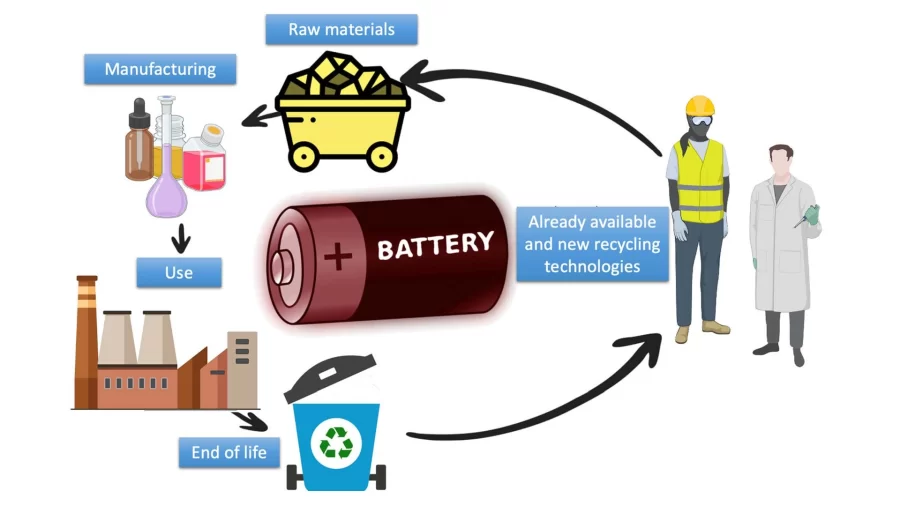Now that you understand global lithium battery standards and certifications, we’re going to go into depth about how they are changing and evolving. The landscape you know today may be vastly different from the landscape you see in 5 years, and that’s largely due to the transformation and progression of global battery standards and certifications.
As lithium batteries become an increasingly important part of our everyday lives, production scales, leading to the need for amended standards to keep up with growing volume. This includes environmental protections such as the need for more recycling centers, increased safety regulations as battery chemistries change and develop, and improved shipping standards as demand rises.
Sustainability
There are several recent policy and standards implementations that show the universal global commitment towards increased sustainability. While there are already strict environmental guidelines in place, recent changes have made them even more stringent. One of the best examples is the EU Battery Regulation, which was approved in 2023 and is set to be implemented in 2027. This will require that manufacturers face new sustainability and recycling mandates, requiring detailed carbon footprint disclosures and enhanced end-of-life battery management. It will also kickstart stringent recycling and material sourcing requirements to reduce environmental impact.
Similarly, China introduced strict recycling guidelines in 2021, requiring manufacturers to develop efficient battery disposal and reuse strategies.

Transportation
The U.S. Department of Transportation (DOT) enforces strict guidelines for lithium battery transportation under 49 CFR 173.185, which is frequently updated, most recently in 2022. The UN 38.3 certification was recently revised in 2021, requiring that batteries be able to withstand physical and environmental stress during transport. The International Air Transport Association (IATA) also made revisions to how manufacturers design and package batteries for shipping in 2023.
Safety
Better infrastructure means faster adoption of EVs. The United States NEVI program, launched as part of the Bipartisan Infrastructure Law (2021), allocates $7.5 billion for a nationwide EV charging network. The European Alternative Fuels Infrastructure Regulation (AFIR), adopted in 2023, mandates that charging stations be installed every 60 km (37 miles) along major EU highways by 2025. China is the global leader in EV battery swapping stations and hopes to have 16,000 nationwide by 2025.
Development
The recently implemented UL 9540A (2019) focuses on evaluating thermal runaway risks in energy storage systems. UL 1973 was also recently implemented (2018) and ensures battery safety for EVs, railways, and grid storage systems. In Europe, IEC 62619 (2017) Addresses safety requirements for industrial lithium batteries used in energy storage and industrial applications. In China, GB/T 36276-2018 governs lithium-ion battery safety and performance in EV applications. Japan and Korea regulate safety standards through Japan Industrial Standards JIS C 8715-2 (2019) and Korea Certification, respectively.
Safety has recently expanded to new battery chemistries as well. UL 2580 (recently revised in 2020) is currently being revised to accommodate new battery chemistries that could become more commonplace in the near future.
Cybersecurity
As smart battery systems in EVs and grid storage become more popular, the need for cybersecurity increases. The ISO/SAE 21434 (2021) standard now requires cybersecurity measures for battery management systems to prevent hacking and data breaches
Lithium battery standards are constantly evolving to accommodate lithium batteries’ place in modern society. As demand rises, standards become more strict. These ever-changing standards protect us from the potential dangers of lithium battery manufacturing and transport while making sure the business is sustainable for years to come. Visit our blog for more information on the future of the lithium battery industry.


